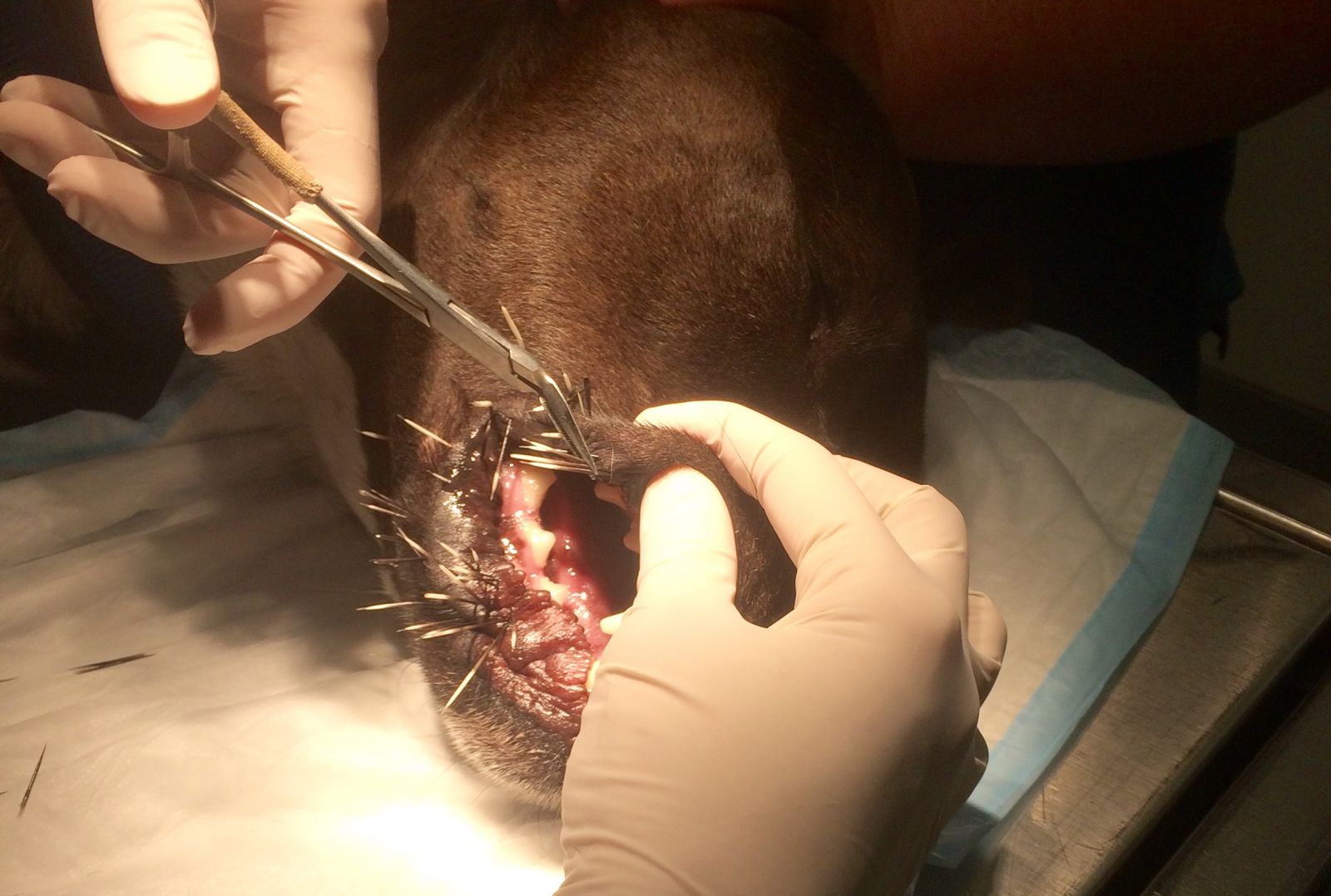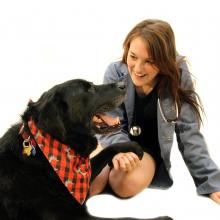For pet owners in Ontario, heartworm and ticks are some of the biggest concerns of the summer. In Whitehorse (where there is no heartworm or Lyme disease) foxtails and porcupine quills are higher on the list.
The average porcupine is covered in up to 30,000 quills. When attacked, these quills often become embedded in the face, muzzle and paws of dogs. The quills are equipped with tiny barbs making them difficult to retract from tissues. These barbs also allow the quills to migrate under the skin and tissue, potentially ending up in some dangerous places (eyes, ears, and joints).
So what should you do if your dog gets quilled?
 Contact your veterinarian right away. It’s important not to try to remove the quills yourself. Removing the quills is very painful for your dog and any unexpected movements as you pull may cause them to break and get lost. Quills that aren’t removed have the potential to migrate; resulting in infections and abscesses later on, and in severe cases may cause the dog to become blind or lame.
Contact your veterinarian right away. It’s important not to try to remove the quills yourself. Removing the quills is very painful for your dog and any unexpected movements as you pull may cause them to break and get lost. Quills that aren’t removed have the potential to migrate; resulting in infections and abscesses later on, and in severe cases may cause the dog to become blind or lame.
.jpg) Try to keep your dog from pawing at their face and breaking quills. A cone collar can help with this!
Try to keep your dog from pawing at their face and breaking quills. A cone collar can help with this!
Your vet is best equipped to remove the quills. Removing quills under anesthesia reduces the risk of broken quills and allows for a thorough exam (especially for those quills stuck inside the mouth or under long fur). It will also reduce the amount of stress and pain for your pup, getting them back to their normal selves as quick as possible!
